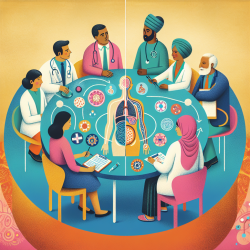Unlocking the Power of Shared Decision-Making in Breast Reconstruction
In the dynamic field of healthcare, particularly in special education and therapeutic services, the concept of shared decision-making (SDM) is gaining momentum. A recent scoping review titled Shared Decision-Making in Breast Reconstruction for Breast Cancer Patients reveals profound insights that can significantly enhance the practice of healthcare professionals, including therapists working with diverse populations.
Understanding Shared Decision-Making
Shared decision-making is a collaborative process that involves patients and healthcare providers working together to make healthcare decisions. This approach respects the patient’s preferences and values, ensuring that they are fully informed about their treatment options. In the context of breast reconstruction post-mastectomy, SDM is crucial due to the complex nature of the decisions involved.
Key Findings from the Scoping Review
The review conducted by Li et al. highlights several factors influencing the implementation of SDM:
- Patient Level: Factors such as socio-demographic data, disease-related information, information needs, and psychological needs play a significant role in decision-making.
- Healthcare Level: The formation of multidisciplinary teams and healthcare professionals’ attitudes towards SDM are crucial.
- Organizational and System Level: Organizational environmental factors and the availability of evidence-based resources impact the effectiveness of SDM.
Implications for Practitioners
As a practitioner, understanding these factors can improve your engagement with patients and enhance their satisfaction with healthcare decisions. Here are some actionable steps you can take:
- Enhance Communication: Develop clear communication strategies to ensure patients understand their options and feel comfortable expressing their preferences.
- Build Multidisciplinary Teams: Collaborate with other healthcare professionals to provide comprehensive care that considers all aspects of a patient’s health and well-being.
- Utilize Decision Aids: Incorporate decision aids into your practice to help patients visualize their options and outcomes.
Encouraging Further Research
While the review provides valuable insights, it also highlights gaps in the current research, particularly at the healthcare provider and organizational levels. Practitioners are encouraged to engage in further research to explore these areas and develop more effective SDM strategies.
By integrating the findings from this review into your practice, you can enhance patient outcomes and satisfaction. Embracing SDM not only aligns with legal compliance and ethical standards but also empowers patients, leading to better health outcomes.
To read the original research paper, please follow this link: Shared Decision-Making in Breast Reconstruction for Breast Cancer Patients: A Scoping Review.










